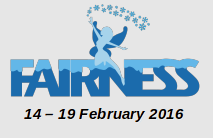Speaker
Jordan Bendarouach
(Justus-Liebig-Universität Gießen(JuLGi-2PI))
Description
The Compressed Baryonic Matter (CBM) experiment at the future FAIR (Facility for Antiproton and Ion Research) complex will investigate the phase diagram of strongly interacting matter at high baryon density and moderate temperatures in A+A collisions from 4-35 AGeV.
One of the key detector components required for this CBM physics program is the RICH (Ring Imaging CHerenkov) detector, which is developed for efficient and clean electron identification and pion suppression. The detector will be made of a CO2 gaseous radiator, MAPMT photo-detectors and a spherical mirror, consisting of about 80 trapezoidal glass mirror tiles used as focussing elements with spectral reflectivity down to the UV range.
An important aspect to guarantee a stable operation of the RICH detector is the alignment of the mirrors. A method using recorded data and originally developed and inspired by the HERA-B experiment will be employed to assess mirror alignment of the RICH mirror system. For a sufficient number of accumulated events hitting a particular mirror tile, measurements of Cherenkov distances and angles on the PMT plane may reveal potential misalignments of the considered tile. Results based on simulated events and the limits of the method will be presented and discussed.
In parallel CLAM (Continuous Line Alignment Monitoring), an alignment procedure developed by the COMPASS experiment, is also planned to be used for the alignment of the mirror system. A downscaled version has been implemented in the CBM RICH prototype detector and tested at the CERN PS/T9 beamline. Using a grid and target dots made of retro-reflective material, it is possible to align the mirrors and monitor their displacements over time by analyzing photographic images of the grid reflected on the mirror. Data and results of image processing will be reviewed and discussed as well.
If possible mirror misalignment is revealed, it can be subsequently included and rectified by correction routines. These routines should mostly increase the ring reconstruction as well as the ring-track matching efficiencies. Finding for each mirror tile ID, its corresponding influence area on the PMT plane, along with corrections in the track extrapolation will allow a direct utilization of the misalignment information on the PMT hits. Results given by first correction routines will be presented.
Primary author
Jordan Bendarouach
(Justus-Liebig-Universität Gießen(JuLGi-2PI))

